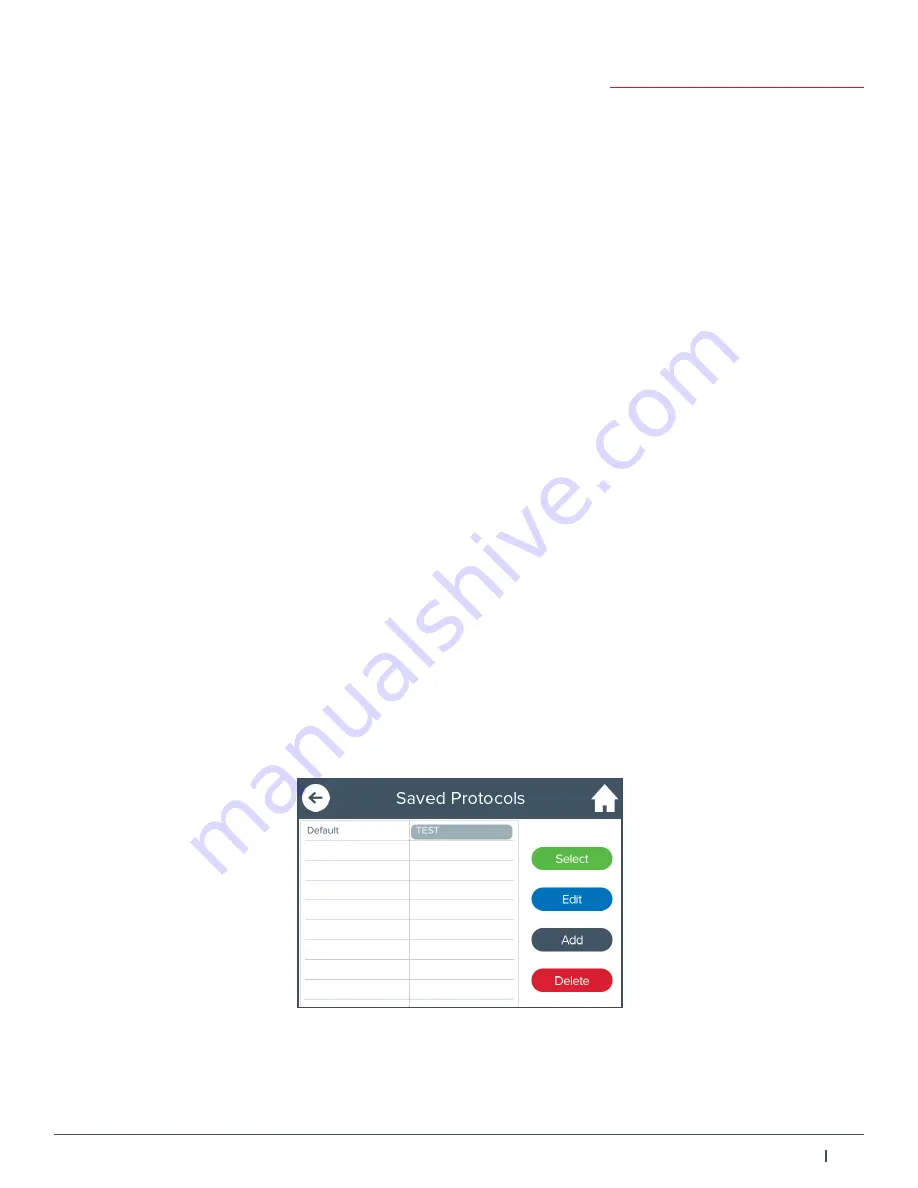
Operating Manual
11
1300-87075-1A
During the
Run Time
stage, the
Time
counts down the time for the preprogrammed run in 1 second increments.
To pause program, touch the
Pause
button. To continue the program, touch the
Resume
button (appears when
paused). To abort the program, touch the
Stop
button. To start a new program, touch the
Run
button.
5.2.2 Stopping or Pausing a Run
To stop a program, touch the
Stop
button on the
Run
screen (Figure 5), the button will dim or turn a muted red
and the program will end. If the
Run
button is touched after the program has stopped, then the entire program
will start over.
To pause during a grinding program, touch the
Pause
button.
Note
:
The Pause button will have a dimmed or
muted yellow appearance for a few seconds after the Run button is touched which indicates it is inactive.
After 5 seconds it will turn a brighter yellow indicating it is active
. The run will hold the settings at that
moment (elapsed time, cycle, etc.). At this point, the door to the sample area can be opened. To resume the
program, close door and touch the
Resume
button. This will restart the program at the point at which it was
paused. Alternatively, pressing
Stop
will end the program.
5.3 Changing Settings
To change parameters (run time, rest time, cycles, and rate), touch the plus
(+)
or minus
(–)
buttons on the
Control Panel
screen (Figure 4). Touching the plus increases the parameter, while touching the minus decreases
the parameter. Tap or hold the plus or minus buttons until the desired number is reached. The changes will
appear in the area between the arrows (Figure 4). The maximum run time is 99 hours for 1 cycle. If running 2–10
cycles, the maximum run time per cycle is 10 hours. The minimum rest is 15 seconds per cycle for 2–10 cycles. To
run a program with the new settings, touch the
Run
button.
Note
: If the run parameters are changed to a protocol and not saved then (MOD) will appear to the right of the
protocol name at the top center of the screen.
5.4 Saved Protocols
The
Saved Protocols
screen is shown in Figure 7. Up to 20 protocols can be saved for simple and fast recall,
increasing productivity, and reducing operator error.
A saved program retains the settings for number of cycles, run time, rest time between cycles, and rate. Be sure
to adjust the rate to the desired setting after recalling a stored program.
Figure 7.
Saved Protocols Screen
The Default protocol recalls the last programmed run setting that was not saved. The Default protocol can be
changed without saving the new settings, as described in section 5.4. At the top left on the Saved Protocols
screen is the back arrow button. Touching the back arrow button returns the user to the previous screen.

























